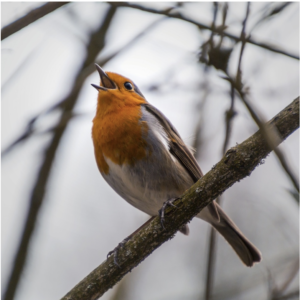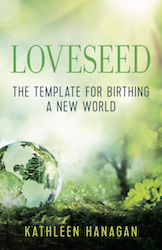
“Hope” is the thing with feathers –
That perches in the soul –
And sings the tune without the words –
And never stops – at all”
Emily Dickenson
There was a period of time in the mid-80’s when my life began unraveling from the inside out. I experienced a sense of deep despair, where I could not see my way through the emotional pain I felt every day. I began therapy, and I still felt pain, but there was something different happening, after a while, that made all the difference. It had to do with the relationship with my first therapist, Eleanor, who lived in New Haven, CT in a big house, with a garden and lots of flowers. She witnessed my pain and offered me hope—a glimmer of possibility that if I continued to do the work, I could feel joy again.
As I began to heal, I connected to a deep desire within me to help others to do the same. The psychiatrist Carl Jung said, “It is our own hurt that gives the measure of our power to heal,” referring to the archetype of the “wounded healer.” Indeed, I was now living in a zone of hope that allowed me to see pain and suffering as a rising from the human condition that we all share. I wanted to return the gift Eleanor had given me, and I embarked on the quest to become a therapist myself.
For 33 years I have witnessed so many human beings who feel despair, and who have taught me more about hope and the human spirit than I could ever have imagined. I have never stopped seeking better ways to help people move through the desert of despair, and I have never seen medication or therapeutic techniques alone do that, because despair runs deeper than such interventions can reach. Despair, or the absence of hope, is often a phase of the healing process, and at other times it is a chronic condition of the soul, which is far more difficult to change.
The zone of hope
Hope is a dimension of the soul, an orientation of the spirit and heart that reaches beyond the material world, and it is not dependent upon outer circumstances. To have hope implies that there is some dissonance or challenge that is being faced, or the need for hope would not exist. The seeds of hope lie within the challenge, and when watered, grow the possibility for true change.
To reach for hope, one must first stop resisting the challenge and begin to reframe it as an opportunity. This is the first step into the zone of hope, which is a fertile ground for transformation to occur. This requires a sense of agency—the belief that with focus and effort, the possibility for change can open. The ability to persevere and follow through is born of this belief in a better future. It is this very sense of agency that despair erodes and that anyone in the business of helping others must learn to impart to the person struggling with despair. It is this sense of agency that parents must impart to their children, rather than doing everything for them.
Vaclav Havel, a Czech statesman, author, poet, playwright, and former dissident, has written a piece about hope that captures the essence of what I have come to know about hope:
Hope is definitely not the same thing as optimism. It is not the conviction that
something will turn out well, but the certainty that something makes sense, regardless of how it turns out. In short, I think that the deepest and most important form of hope, the only one that can keep us above water and urge us to good works, and the only true source of the breathtaking dimension of the human spirit and its efforts, is something we get, as it were, from “elsewhere.” It is also this hope, above all, which gives us the strength to live and continually to try new things, even in conditions that seem as hopeless as ours do now.
The inner healing intelligence
Where and what is this “elsewhere,” and how can we help a person tap into it? I have asked myself that for so long, and I believe anyone in the helping profession needs to be asking that question every time a person comes for help.
I believe that “elsewhere” is right inside the person, and is their inner healing intelligence, which is an innate propensity to heal and become whole that is within every human being. The task of the healer is to connect the person to that intelligence, which knows what to do.
If you break a bone, you don’t need a doctor to tell your platelets to start degranulating, or for anyone to consciously direct your osteoclasts to remodel your bone, because these natural healing abilities are within a person with a healthy immune system. But you may need a doctor to set your bone and advise you how to care for your bone while it’s healing.
.
Likewise, if you suffer an emotional trauma, whether it is a mild slight or a severe, life-altering event, your natural instinct is to protect and then heal. The challenge is that most of us don’t live in an environment that is set up for emotional healing, and repeated injuries compromise a person’s emotional immune system. We begin to protect all the time or not enough.
Psychedelics and the zone of hope
A few years ago, I wrote this article about psychedelics and mental health and had shared how much my own healing was supported by Holotropic Breathwork. When psychedelics were banned in 1966, the psychiatrist Stan Grof developed this form of breathing that facilitates transcendent and expanded states of awareness that allow for dramatic shifts in perception and deep healing. Grof was attempting to replicate the non-ordinary state of consciousness (NOSC) that psychedelics induced, which allowed a person to access their inner healing intelligence.
In 2019, thanks to the author Michael Pollen’s book How to Change Your Mind a psychedelic renaissance has been ignited that is changing the field of mental health as never before. Psychedelics are available legally in parts of the U.S. in the form of ketamine and cannabis, and other medicines are being used by millions of people worldwide on their own, or with guides from the psychedelic underground. Countless people who were stuck in despair have stepped into the zone of hope with the proper use of psychedelics.
When we take high enough doses of psychedelics, the control of the default mode network (DMN) is temporarily turned off, allowing a person to break free from habitual thought patterns. This DMN refers to an interconnected group of brain regions that are associated with introspective functions, internally-directed thought, such as self-reflection, and self-criticism. This disruption of the DMN is what leads to the feelings of ego dissolution, a typical part of the psychedelic experience. The sense of self is expanded far beyond the limiting bounds of the ego to include biographical, archetypal spiritual, and even cosmic levels of consciousness.
This reduction in DMN activity functions as a kind of “rebooting” of the brain, and it is thought to be linked to one of the most enduring therapeutic effects of psychedelic substances—-the total surrender of the personality to something far greater than itself. There is growing scientific evidence that suggests that the DMN may play a role in many mental health conditions, as well as suppressing our natural creative impulses. When a person is caught in a ruminative loop from the DMN, despair is often a result.
False hope and the magic bullet syndrome
There is a form of hope that is not really hope at all, but rather wishful or magical thinking that is not based in realistic expectations of what is possible. Hope is built on the belief that a sincere desire and focused effort opens up possibilities, whereas false hope assumes that circumstances or someone or something outside of oneself will be the answer. It is about knowing the difference between what we can and cannot change. Coming to know this difference is what allows a person to access the wisdom of the inner healer.
This is one of the challenges inherent in the use of psychedelics, as well as one of the biggest opportunities. Pollen emphasized in his book the critical role of set and setting if a person is going to use psychedelics for healing. Hundreds of thousands of psychotherapists are being trained in the use of psychedelics at this time, so that they can provide the optimum set and setting for people to shift into the zone of hope. Learning how to hold the space for a person using psychedelics to access their inner healer is a skill and an art that is born of a person’s own healing using psychedelics.
Helping someone realize that they heal themselves and that the “medicine” is not the healer is essential. Managing expectations and disappointments requires wisdom and compassion. Helping a person understand that psychedelics are not the solution to their suffering is key, and that their sincere intention to heal, along with the willingness to remain steadfast in their efforts, is what will nurture hope and lift them out of despair.
All this is the role of the guide or therapist, which means that the healing that happens through the use of psychedelics is a very relational matter. It is not the same as getting your prescription and taking a pill every day so that you can continue to live your life as usual. It is about receiving the guidance to help you connect the dots of all the wondrous unfolding of your life every day. This integration work is essential if false hope is to be avoided, and if the effects of these medicines is to lead to real change.
The role of gratitude in remaining hopeful
It is not possible to be in despair and to feel gratitude at the same time. The two states of being exist in very different dimensions of consciousness. Gratitude feeds and nurtures hope which lifts a person out of despair.
At one point in my own healing journey, when I was with my second therapist, Barbara, whom I saw for several years, I had dropped down into a second wave of deep despair that seemed worse than the first. I remember looking up and saying to her, “Will this pain ever end? I just don’t know what to do.” She looked at me with great compassion, in a way that I was certain she was telling me the truth—as if she herself knew that pain—-and said something I will never forget. It was so simple and yet changed everything. She said, “You are in your healing process. No one can take that from you. Be grateful for that, stay with it, and you will get better.” And I did. Like Eleanor, she nudged me right into the zone of hope when I needed it, by reminding me what I have to be grateful for.
And the process continues. It is life-long. I can now drop into despair and find my way back to the zone of hope very quickly, because I know the way and have done it so many times. My inner healer and I have become friends on the path, and I believe in hope, so it makes my work more authentic. In this way, I am able to be deeply grateful, even for the pain.
Glimmers
One morning last week, a client asked me what the opposite of a trigger is. The word “trigger” has become a household word, where even young children say things like “that triggered me.” Due to the increasing awareness of how our brain affects so much of our behavior, we are using such words to signify the hijacking of the amygdala which causes a person to become emotionally reactive. The world has become more trauma informed, and yes, what we used to call stress is now referred to as being triggered with a host of physical and emotional symptoms that flood the person’s system. It doesn’t feel good to be triggered!
I was curious about what my client would say, and was writing this article at the time. I knew it had to do with staying in the zone of hope, but could not find a word. She smiled and said “GLIMMER. The opposite of trigger is glimmer.” Of course, it’s having a glimmer of hope. A sliver. A place the light gets in. A moment of awe watching the sunset. A surge in joy as you see an old friend. A rush of delight as you hold someone you love. A welling up of contentment as you lie back with your dog.
May we all find glimmers of hope in this difficult world. May we pause to take them in and feel their healing effects. May we nurture more glimmers with gratitude, and share them with others.



I connected deeply to your experience based words. Learning to walk on the edge in the glimmer..,
Thank you
Thank you Katherine for this uplifting, insightful and inspiring writing that you do. I am beaming with glimmer ✨☄️
Soosan